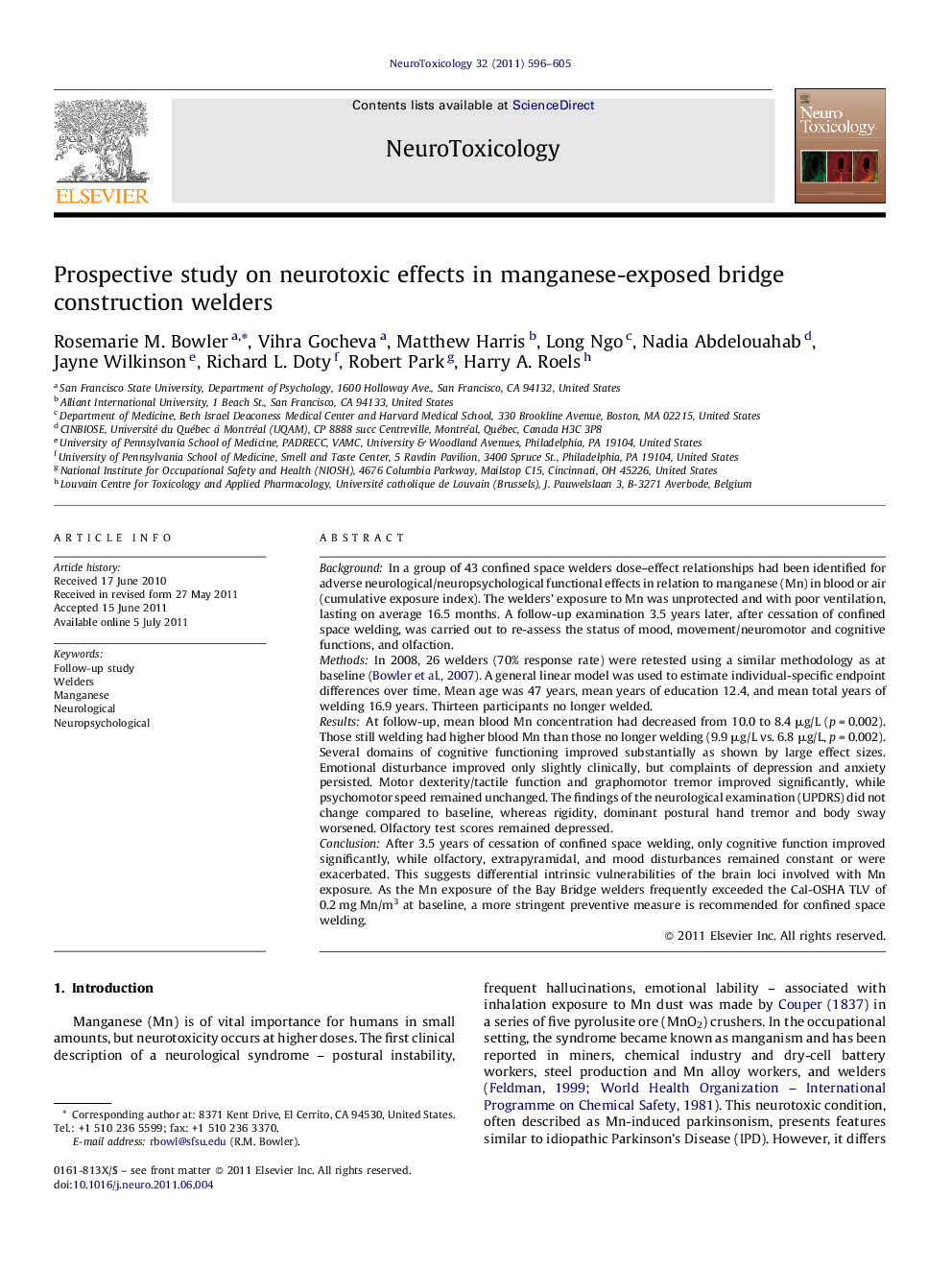| Article ID | Journal | Published Year | Pages | File Type |
|---|---|---|---|---|
| 2589966 | NeuroToxicology | 2011 | 10 Pages |
BackgroundIn a group of 43 confined space welders dose–effect relationships had been identified for adverse neurological/neuropsychological functional effects in relation to manganese (Mn) in blood or air (cumulative exposure index). The welders’ exposure to Mn was unprotected and with poor ventilation, lasting on average 16.5 months. A follow-up examination 3.5 years later, after cessation of confined space welding, was carried out to re-assess the status of mood, movement/neuromotor and cognitive functions, and olfaction.MethodsIn 2008, 26 welders (70% response rate) were retested using a similar methodology as at baseline (Bowler et al., 2007). A general linear model was used to estimate individual-specific endpoint differences over time. Mean age was 47 years, mean years of education 12.4, and mean total years of welding 16.9 years. Thirteen participants no longer welded.ResultsAt follow-up, mean blood Mn concentration had decreased from 10.0 to 8.4 μg/L (p = 0.002). Those still welding had higher blood Mn than those no longer welding (9.9 μg/L vs. 6.8 μg/L, p = 0.002). Several domains of cognitive functioning improved substantially as shown by large effect sizes. Emotional disturbance improved only slightly clinically, but complaints of depression and anxiety persisted. Motor dexterity/tactile function and graphomotor tremor improved significantly, while psychomotor speed remained unchanged. The findings of the neurological examination (UPDRS) did not change compared to baseline, whereas rigidity, dominant postural hand tremor and body sway worsened. Olfactory test scores remained depressed.ConclusionAfter 3.5 years of cessation of confined space welding, only cognitive function improved significantly, while olfactory, extrapyramidal, and mood disturbances remained constant or were exacerbated. This suggests differential intrinsic vulnerabilities of the brain loci involved with Mn exposure. As the Mn exposure of the Bay Bridge welders frequently exceeded the Cal-OSHA TLV of 0.2 mg Mn/m3 at baseline, a more stringent preventive measure is recommended for confined space welding.
► Follow-up of confined space welders with at baseline air and blood Mn dose-related CNS effects. ► Recovery after cessation of confined space welding in cognitive but not other brain functions. ► Persistent olfactory, extrapyramidal and mood dysfunction 3.5 years after removal of Mn exposure.
